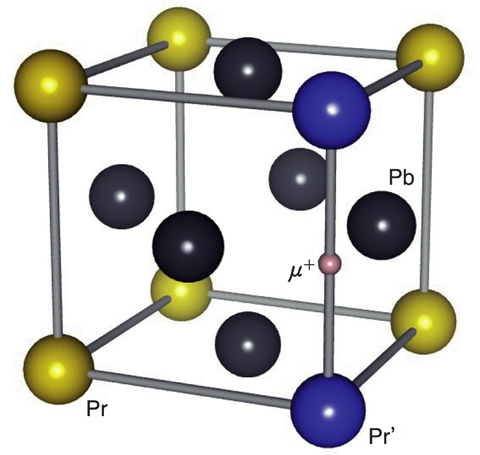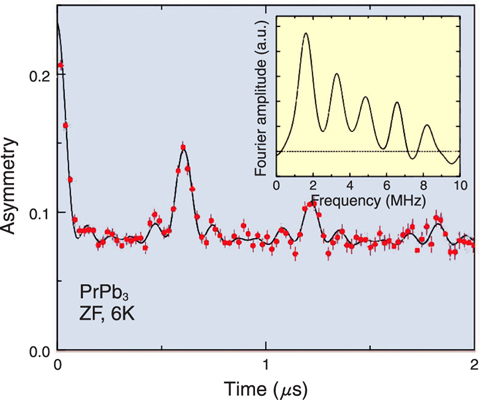
Fig.6-9 Crystal structure of PrPb3 and μ+ site

Fig.6-10 μ+SR spectrum of PrPb3 at 6K in zero magnetic field
In recent years, much interest has been focused on hydrogen-based energy systems. The key of this technology is high-density storage of hydrogen, and hydrogen-absorbing (HA) alloy is useful for this purpose. The HA alloy absorbs the hydrogen to form metal hydride. In this process, the hydrogen molecule is dissociated into H atoms and these are stabilized at an interstitial site of the lattice. Detailed understanding of the interstitial H state is thus important for further improvement of HA properties.
We studied the interstitial H state in a material related to the HA alloy using positive muons (μ+). The μ+ can be regarded as a light isotope of 1H since it possesses charge +e and mass ~1/9mp, where mp is the mass of a proton. Therefore, chemical properties of the μ+ in condensed matter are considered to be identical to those of 1H except for isotope effects. The μ+ implanted into materials stops at the interstitial site and decays into a positron and two neutrinos. The positron is preferentially emitted in the direction of the μ+ spin, which evolves via magnetic interactions with surrounding electron and nuclear spins. Detailed analysis of the time evolution of the μ+ spin provides us with information on the magnetic environment at the μ+ site.
We launched this research project with investigation of the interstitial H state in a rare-earth-based intermetallic compound PrPb3, related to the typical HA alloy MmNi5 (Mm: mixture of light rare-earth elements). First, the μ+ site in PrPb3 was determined to be the midpoint between two Pr ions (Pr') as shown in Fig.6-9, using the μ+ spin rotation and relaxation method (μ+SR) in a high magnetic field. μ+SR measurements in zero magnetic field were also performed, and the characteristic spectrum shown in Fig.6-10 was obtained in the paramagnetic state. This spectrum indicates quantization of the magnitude of a hyperfine field that is generated at each μ+ site. From detailed analysis, it was clarified that coupling between Pr' and μ+ spins is anisotropically enhanced as a result of deformation of the ƒ-electron state owing to the μ+ charge. The quantum character of the hyperfine field strongly supports this conclusion.
The present result suggests the importance of the electrostatic interaction between the ƒ-electrons and the interstitial H in HA alloys. We plan further μ+SR studies in HA alloys which have commercial promise, to clarify the relation between this interaction and the HA properties.
<Previous: 6-3 | Next: 7 Nuclear Science and Engineering Research >